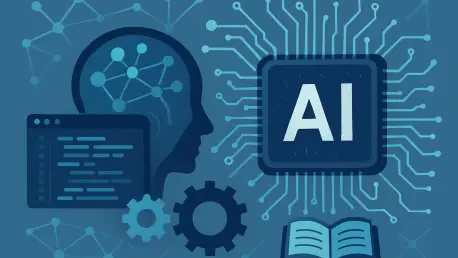In an era where technological advancements challenge the status quo, Moonshot AI’s open-source language model, Kimi K2, has emerged as a formidable contender against established industry heavyweights. This development not only demonstrates the disruptive potential of smaller, resource-efficient companies but also underscores a significant shift toward democratizing AI accessibility. The landscape of open-source language models has experienced exceptional growth, marked by innovation in AI training and deployment strategies. As enterprises increasingly seek cost-effective and multifunctional solutions, the open-source model attracts mounting interest and investment, sparking transformative changes across various sectors.
Current Landscape and Growth of Open-Source Language Models
Rapid Adoption and Expansion
The ascent of open-source language models in the tech industry reflects a shift in priorities as companies seek flexible, cost-effective AI solutions. According to recent industry reports, investments in open-source AI models have surged fifteenfold from 2025 to 2027. Open-source models have quickly become integral to various sectors, including technology, finance, and healthcare. Notably, Moonshot AI’s Kimi K2, with its novel mixture-of-experts (MoE) architecture, showcases the capabilities of such models by efficiently managing computational demands while retaining impressive performance metrics.
Practical Applications Across Industries
Open-source language models are redefining possibilities in real-world applications. Moonshot AI’s Kimi K2 sets a new standard, achieving groundbreaking accuracy in complex software engineering tasks, as evidenced by its superior performance on benchmarks like SWE-bench Verified. The model’s sophisticated structure allows it to autonomously execute multifaceted tasks, such as statistical analysis with Python, thereby transforming business operations. Case studies spotlight Kimi K2’s efficacy in enhancing productivity, suggesting revolutionary changes in the application of AI in practical scenarios beyond the scope of conversational tasks.
Expert Insights and Industry Perspectives
Industry experts maintain that the advantages of open-source language models are redefining the competitive dynamics within the AI sector. These models offer democratized access to advanced AI capabilities, allowing smaller companies to challenge proprietary systems traditionally dominated by tech giants. However, experts also outline significant challenges, including ensuring quality control and security. Stakeholders express optimism about Moonshot AI’s innovative strategies, but caution the need for continuous adaptation in deployment reliability to maintain industry impact effectively.
Future Trajectory and Implications
As open-source language models continue to evolve, their future trajectory promises further advancements with widespread implications. Anticipated developments include enhanced democratization of AI access, aimed at providing more users with robust tools for diverse applications. However, maintaining rigorous security measures and upholding quality standards remain paramount challenges. The ongoing evolution of these models suggests potential disruptions across industries, indicating both positive outcomes, such as streamlined business operations, and potential pitfalls, including scalability issues and market competition dynamics.
Conclusion and Forward-Looking Perspectives
Kimi K2’s emergence reflects a pivotal turn in the AI sector, emphasizing the transformative potential of open-source models in redefining technological boundaries. Moonshot AI’s strategic approach underlines the industry shift toward pragmatic applications and efficient AI deployment, steering away from mere computational supremacy. Looking ahead, open-source AI models are set to challenge proprietary frameworks, compelling incumbents to adapt swiftly to evolving demands, signaling a future where innovation prevails in business applications and democratized AI access.









